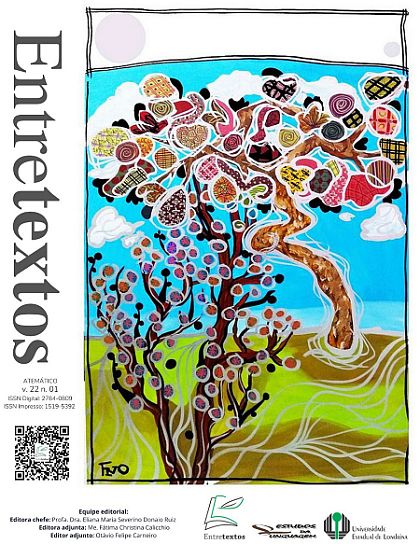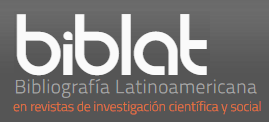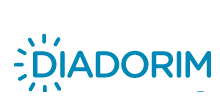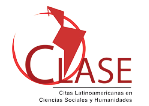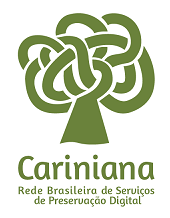Learning English based on blended tasks in a flipped online classroom
DOI:
https://doi.org/10.5433/1519-5392.2022v22n1p183Keywords:
Learning Languages Online. Flipped Classroom. Blended Tasks.Abstract
This study aims to discuss learning English as a second language (L2) based on blended tasks in a flipped online classroom. Studies on Active Methodologies and the Flipped Classroom have shown that the learning process is enhanced when teachers expose students to activities in which they play a vital role in the knowledge development process. We seek to verify the possible contributions and limitations of blended tasks for learning English as an L2 in a Flipped Online Classroom. This study adopts a netnographic methodology that deals with theory and practice adapting the ethnographic method to investigate the influence of the internet in technology-mediated learning environments. The tasks were implemented synchronously and asynchronously with students at the Sul-rio-grandense Federal Institute, and we collected data using class notes and a questionnaire. Our observations and analysis of the results indicate a more active engagement of the students. Our findings also show that the Flipped Online Classroom promotes affordances for learning English.
Downloads
References
AZEVEDO, Lise Virgínia Vieira de; NOGUEIRA, Teresinha de Fátima. Metodologias ativas: saberes, representações e implicações para a sala de aula de língua inglesa. RevistaCBTecLE, Campinas, v. 1, n. 2, p. 143-175, 2018.
BACICH, Lilian; MORAN, José (org.). Metodologias ativas para uma educação inovadora: uma abordagem teórico-prática. Porto Alegre: Penso, 2018. Retrieved from: https://curitiba.ifpr.edu.br/wp-content/uploads/2020/08/Metodologias-Ativas-para-uma-Educacao-Inovadora-Bacich-e-Moran.pdf. Accessed on: 10 jun. 2022.
BERGMANN, Jonathan; SAMS, Aaron. Flip your classroom: reach every student in every class every day. Washington: International Society for Technology in Education, 2012.
BOTTENTUIT JUNIOR, João Batista. Sala de aula invertida: recomendações e tecnologias digitais para a sua implementação na educação. Revista Renote, Porto Alegre, v. 17, n. 2, p. 11-21, 2019. Retrieved from: https://seer.ufrgs.br/index.php/renote/article/view/96583/54183. Accessed on: 10 jun. 2022.
ELLIS, Rod et al. ask- Based language teaching theory and practice. Cambridge: Cambridge University Press, 2019. (Cambridge Applied Linguistics).
GONZÁLEZ-LLORET, Marta. Collaborative tasks for online language teaching. Foreign Language Annals, New York, v. 53, n. 2, p. 260-269, 2020. Retrieved from: https://onlinelibrary.wiley.com/doi/full/10.1111/flan.12466. Accessed on: 10 jun. 2022.
GONZÁLEZ-LLORET, Marta; ORTEGA Lourdes. Towards technology-mediated TBLT. In: GONZÁLEZ-LLORET, Marta; ORTEGA Lourdes (ed.) Technology-mediated TBLT: researching technology and tasks. Philadelphia: John Benjamins Publishing Company, 2014. p. 1-22.
KENNING, Marie-Madeleine. ICT and language learning: from print to the mobile phone. London: Palgrave Macmillan, 2007.
KENSKI, Vani Moreira. Tecnologias e ensino presencial e a distância. Campinas: Papirus, 2003.
KIELING, Helena dos Santos. Blended learning no ensino de inglês como língua estrangeira: um estudo de caso com professoras em formação. 2018. Dissertação (Mestrado em Letras) - Universidade Católica de Pelotas, Pelotas, 2018. Retrieved from: http://tede.ucpel.edu.br:8080/jspui/bitstream/tede/673/2/HELENA%20DOS%20SANTOS%20KIELING.pdf. Accessed on: 10 jun. 2022.
KOZINETS, Robert V. Netnografia: realizando pesquisa etnográfica online (Métodos de Pesquisa). Porto Alegre: Penso, 2014.
LAI, Chun; LI, Guofang. Technology and task-based language teaching: a critical review. Calico Journal, Sheffield, v. 28, n. 2, p. 498-521, 2011. Disponível em: https://journal.equinoxpub.com/Calico/article/view/17127/19596. Accessed on: 10 jun. 2022.
LÉVY, Pierre. Cibercultura. São Paulo: Editora 34, 1999.
LIMA, Priscilla Alves. O uso de metodologias ativas e plataformas digitais para o desenvolvimento de um projeto de multiletramentos em língua portuguesa. 2019. Dissertação (Mestrado em Linguística Aplicada) - Universidadede Taubaté, Taubaté, 2019. Retrieved from: http://repositorio.unitau.br/jspui/bitstream/20.500.11874/5702/1/DM%20Priscila%20Alves%20de%20Lima.pdf. Accessed on: 10 jun. 2022.
LITTLEWOOD, William. Communicative and task-based language teaching in east Asian classrooms. Language Teaching, Cambridge, v. 40, n. 3, p. 243-249, 2007. Retrieved from: https://www.cambridge.org/core/services/aop-cambridge-core/content/view/42FAB897C9A7255F9843C090649E1987/S0261444807004363a.pdf/communicative-and-task-based-language-teaching-in-east-asian-classrooms.pdf. Accessed on: 10 jun. 2022.
LOPES JÚNIOR, Juarez Aloizo. Aprendizagem de Inglês como L2 baseada em tarefas: um diálogo de saberes entre complexidade e o ciclo de desenvolvimento linguístico mediado pela tecnologia. 2019. Tese (Doutorado) - Universidade Federal de Pelotas, Pelotas, 2019. Retrieved from: http://guaiaca.ufpel.edu.br:8080/bitstream/prefix/6413/1/Tese_Juarez_Lopes.pdf. Accessed on: 10 jun. 2022.
LOPES Jr., Juarez; VETROMILLE-CASTRO, Rafael; LEFFA, Vilson. A complex approach to technology-mediated task-based learning. Entrepalavras Revista de Linguística, v.11, n.3, p. 148-169, 2021.
SKEHAN, Peter. A framework for the implementation of task-based instruction. Applied Linguistics, Oxford, v. 17, n. 1, p. 38-62, 1996.
TALBERT, Robert. Guia para utilização da aprendizagem invertida no ensino superior. Porto Alegre: Penso, 2019.
THOMAS, Michael; REINDER, Hayo (ed.). Task-based language learning and teaching with technology. London: Continuum International Publishing Group, 2010.
VALENTE, José Armando. A sala de aula invertida e a possibilidade do ensino personalizado: uma experiência com a graduação em midialogia. In: BACICH, Lilian; MORAN, José (org.). Metodologias ativas para uma educação inovadora: uma abordagem teórico-prática. Porto Alegre: Penso, 2018. p. 26-44. Retrieved from: https://curitiba.ifpr.edu.br/wp-content/uploads/2020/08/Metodologias-Ativas-para-uma-Educacao-Inovadora-Bacich-e-Moran.pdf. Accessed on: 10 jun. 2022.
ZIEGLER, Nicole. Synchronous computer-mediated communication and interaction: a meta-analysis. Studies in Second Language Acquisition, Cambridge, v. 38, n. 3, p. 553-586, 2016a. Retrieved from: https://www.cambridge.org/core/services/aop-cambridge-core/content/view/F05E29E42457059532258158B93167D7/S027226311500025Xa.pdf/synchronous-computer-mediated-communication-and-interaction-a-meta-analysis.pdf. Accessed on: 10 jun. 2022.
ZIEGLER, Nicole. Taking technology to task: technology-mediated TBLT, performance, and production. Annual Review of Applied Linguistics, Cambridge, v. 36, p. 136-163, 2016b. Retrieved from: https://www.cambridge.org/core/services/aop-cambridge-core/content/view/A37DCEF0AA0F5B957E7727CFD4B82746/S0267190516000039a.pdf/taking-technology-to-task-technology-mediated-tblt-performance-and-production.pdf. Accessed on: 10 jun. 2022.
Downloads
Published
How to Cite
Issue
Section
License
Copyright (c) 2022 Entretextos

This work is licensed under a Creative Commons Attribution 4.0 International License.
Entretextos adota a Licença Creative Commons Attribution 4.0 International, portanto, os direitos autorais relativos aos artigos publicados são do/s autor/es.
Sob essa licença é possível: Compartilhar - copiar e redistribuir o material em qualquer suporte ou formato. Adaptar - remixar, transformar, e criar a partir do material, atribuindo o devido crédito e prover um link para a licença e indicar se mudanças foram feitas.

